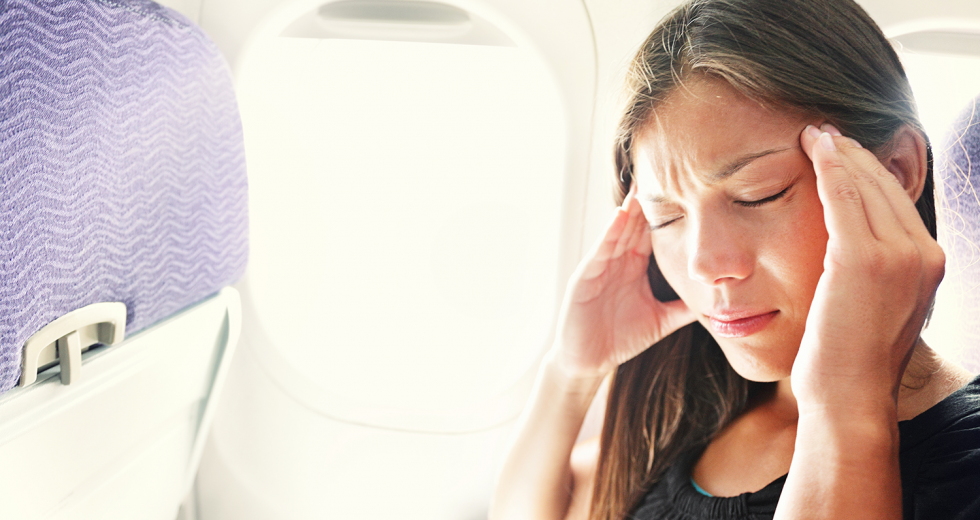You don’t have to fasten a seatbelt and you don’t have to bring your seat to the fully upright and locked position. These are just two reasons why a root canal may now be less painful than your average commercial airline experience.
As recently as 2000, flying was merely a hassle, not an expensive ordeal. Then came 9/11 and the TSA, and beginning in 2006, a surge in oil prices that drove the airline’s biggest business cost — jet fuel — to triple. By 2008, airlines were hemorrhaging dollars with seemingly no end to the financial turbulence.
Then American Airlines decided to offset some of its fuel cost with a modest fee for checked bags. Other airlines jumped on the fee carousel, and before long every alleged amenity, from a blanket and snacks to extra legroom and onboard Wi-Fi would come at a price. Many airlines even charge adults a fee for not flying — up to $100 tacked on to the ticket price for an unaccompanied minor.
Even as jet-fuel prices have moderated at around $1.70 per gallon, the jet-fueled fees may never go away. Last year, the 26 US carriers earned north of $6 billion, a revenue stream that’s been rising steadily year over year. Everything but the lavatory seems to be on the table as airlines seek new opportunities to gouge passengers. And one European carrier, Ryanair, actually did try to charge a fee to answer natures call, before flushing that PR nightmare away.
The lone exception to these high-flying highway robbers has been Southwest, but that, too, may be changing. Southwest, long successful at hedging fuel, has saved billions per year on the commodity. But this year Southwest, burned by falling fuel prices over the past two years, abandoned its decades-long hedging strategy. Instead, Sacramento’s dominant flier is now raising dollars like the typical, tired legacy carriers. And with about 60 percent of the market in and out of SMF, this should be a concern to NorCal travelers.
“I have not heard anyone complaining about Southwest policies,” says Sacramento International Airport Spokesperson Laurie Slothower. “But that doesn’t mean people aren’t addressing concerns directly to Southwest.”
Since it’s inception in 1971, Southwest has been a maverick carrier, priding itself on low fares, a fun, customer-service based culture and a business plan dedicated to bringing affordable air service to cities that lacked it. Since coming to Sacramento in 1991, Southwest has offered direct, nonstop service to a dozen cities and connections to scores of others. But things are changing and, from a consumer perspective, not for the better.
“We have grown, and we do make changes to stay competitive,” offers Southwest spokesman Dan Landson. “But with our ongoing policies — that bags fly free and reservations can be changed at no charge — we remain a solid value proposition for our customers.”
Southwest, which saved money operating out of outlying airports like Burbank, Calif., Baltimore, Md., and Islip, N.Y., is now paying the costlier gate fees to fly directly into big-city airports like Boston Logan, New York La Guardia and Washington National. It still bills itself as the nation’s low-cost airline, but USA Today recently compared fares on dozens of route segments and found Southwest matched or beat the competition in only 40 percent of those routes.
A very unscientific, Sac-centric survey suggests good and bad news for Southwest fliers. On a Labor Day weekend itinerary, Southwest — even without the free-bag bonus — undercut all others in the cost of a trip from Sacramento to Chicago. With an outbound, Thursday morning nonstop and a 1-stop Sunday return, the cost of a Southwest ticket was $458 dollars. The nearest competing fare was offered by several carriers at $533, not including the cost of bags. Point, Southwest.
But if you want to head east to see Fenway Park and a little Boston history, Southwest is decidedly the wrong way to go. The cheapest Southwest ticket for a June round trip from Sacramento to Boston is $1172. A host of other carriers charge $695. Even with the baggage fees, you would save hundreds.
Southwest has also jettisoned it’s once easy frequent flier program. The old Rapid Rewards program offered a free ticket after 16 flight segments, whether it was short (say Sacramento to Portland) or long (perhaps Boston to Oakland). Now, Rapid Rewards 2.0 will test your math skills with algorithms tied to the cost of a ticket, class of service and flight duration. It’s a system that disproportionately favors full-fare business travelers over leisure fliers.
Retired Air Force General Jim Hopp of El Dorado Hills knows plenty about air travel, and he too grumbles about the apparent erosion of Southwest’s low-cost mojo. Still, he believes time is money and says, “No airline can board and turn a flight around as quickly as Southwest.”
In spite of Southwest’s legacy-carrier-like evolution (or maybe because of it), Wall Street has pushed the stock price to a record $46 dollars per share, but investors have seen a steep descent since March, with the company now trading around $33 per share.
Here in Sacramento, Southwest is still the big dog when it comes to flights and convenience, but the growing evidence suggests even if you still enjoy free snacks on your next flight, you may no longer be flying for peanuts.



